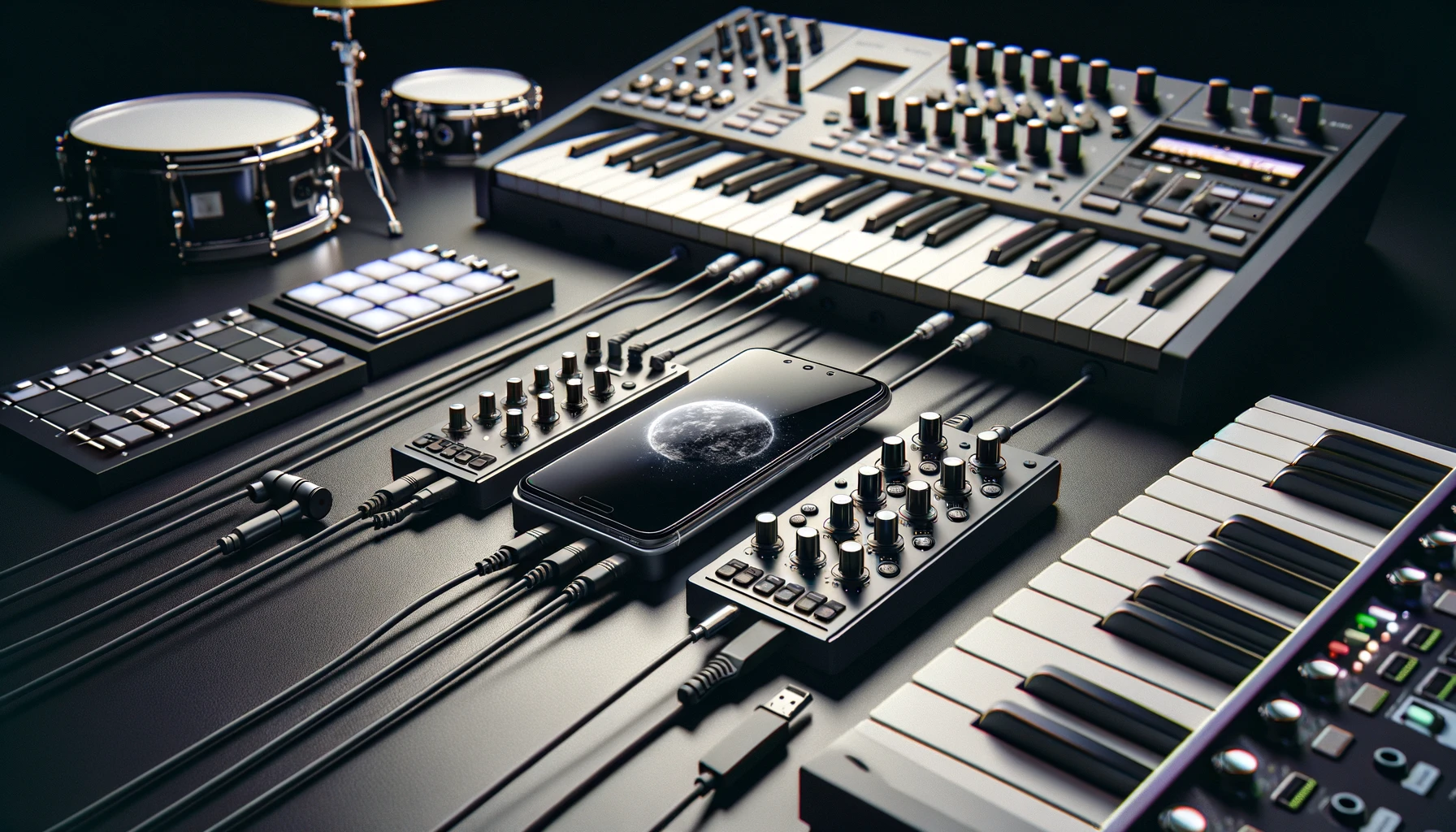Imagine having a portable music studio at your fingertips, ready to unleash your creativity whenever inspiration strikes.
By turning your smartphone into a MIDI controller, you can control music software, hardware synths, and more using intuitive touch interfaces and motion gestures.
In this guide, we’ll show you how to transform your phone into a versatile MIDI controller and explore the benefits, apps, and setup process.
Let’s dive in!
How to Use Your Phone as a MIDI Controller
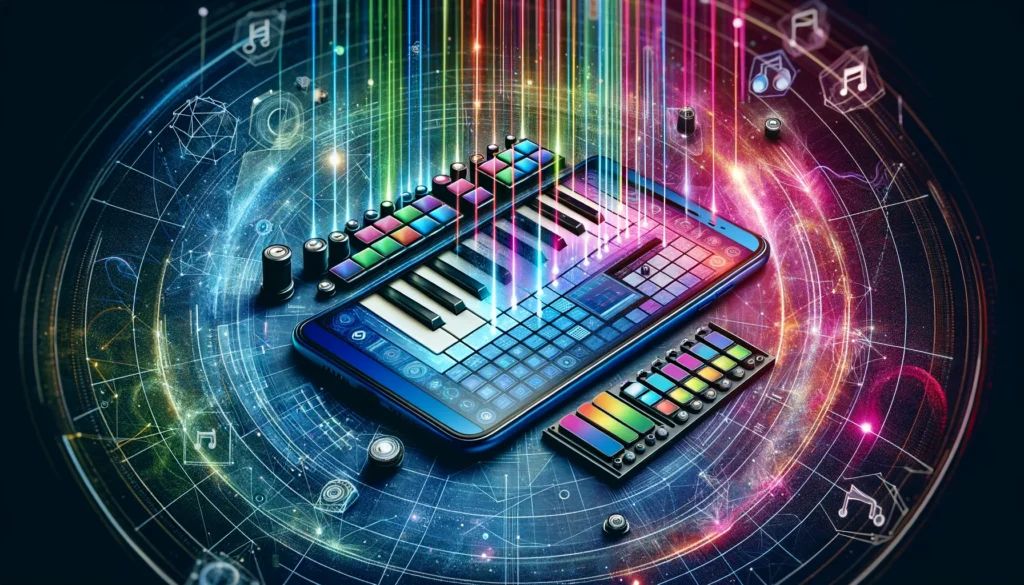
Turning your smartphone into a MIDI controller is a straightforward process that involves downloading a compatible app, establishing a connection to your music software or hardware, and configuring your settings.
First, choose a MIDI controller app that suits your needs, such as a virtual keyboard, drum pads, or a customizable interface with sliders and knobs.
Next, connect your phone to your computer or MIDI-enabled device via USB, Bluetooth, or Wi-Fi.
Finally, configure the MIDI settings on your phone and in your music software to establish communication and map controls to specific parameters.
With your phone now functioning as a MIDI controller, you can tap, swipe, and interact with the on-screen interface to generate MIDI notes, control parameters, and even record live performances.
We’ll explore the setup process and creative possibilities in more depth throughout this guide.
What is a MIDI Controller?
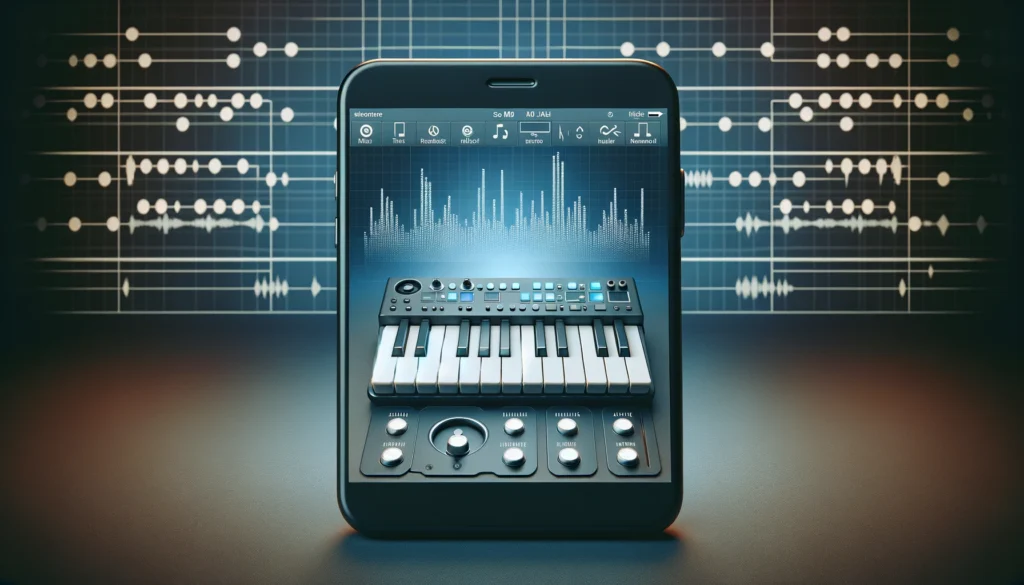
A MIDI controller is a hardware or software device used to generate and transmit MIDI data to other MIDI-enabled devices, such as a digital audio workstation (DAW), synthesizers, or drum machines.
MIDI stands for Musical Instrument Digital Interface, and it allows electronic musical instruments, computers, and other hardware to communicate with each other.
Advantages of Using Your Phone as a MIDI Controller
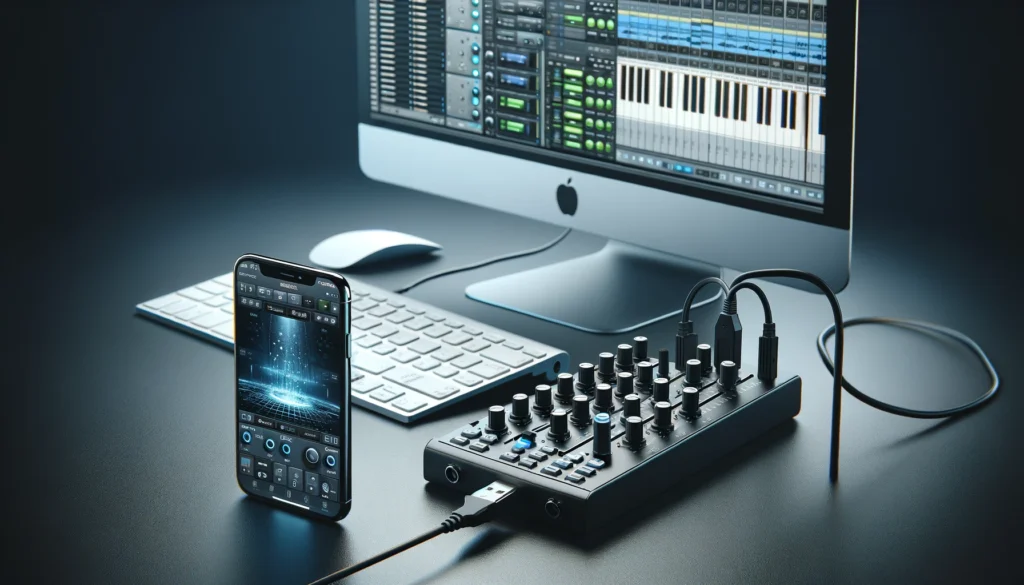
Using your phone as a MIDI controller offers several advantages over traditional hardware controllers.
First and foremost, it provides a high degree of portability, allowing you to create and perform music on the go without the need to carry bulky equipment.
Additionally, using your phone as a MIDI controller can be a cost-effective solution, as it eliminates the need to purchase separate hardware.
Many MIDI controller apps are available for free or at a fraction of the cost of physical controllers.
Finally, using your phone as a MIDI controller offers a high degree of customizability.
You can tailor the interface to your specific needs, whether it’s a piano keyboard, drum pads, or a mixer with knobs and sliders.
Apps to Turn Your Phone into a MIDI Controller
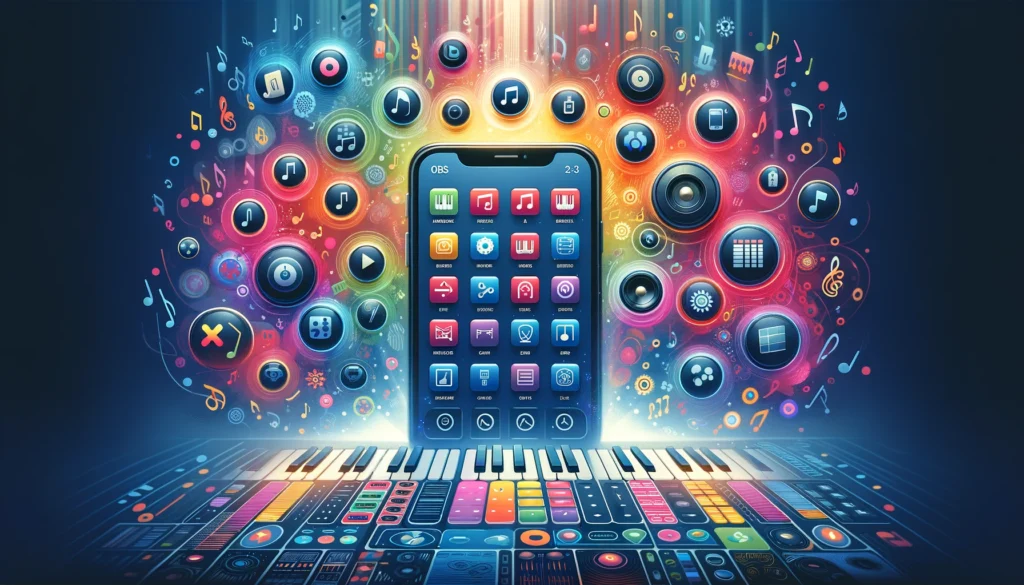
There are numerous apps available for both iOS and Android devices that can turn your phone into a fully-functional MIDI controller.
Some popular options include:
GarageBand for iOS
Apple’s GarageBand app includes a wide range of virtual instruments and a built-in MIDI controller interface, making it a great choice for iOS users.
TouchOSC for iOS and Android
TouchOSC is a highly customizable app that allows you to create your own MIDI controller layouts with various touch-sensitive controls, such as sliders, buttons, and X/Y pads.
Midi Guitar for iOS and Android
Midi Guitar turns your phone into a guitar-style MIDI controller, complete with virtual strings and a fretboard that you can strum and tap to generate MIDI notes.
Setting Up Your Phone as a MIDI Controller
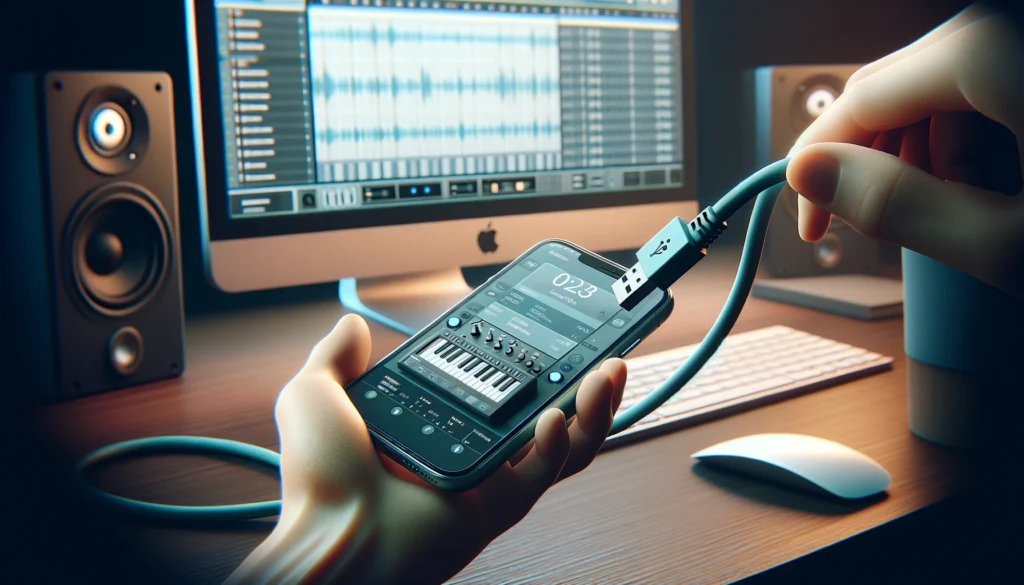
To use your phone as a MIDI controller, you’ll need to establish a connection between your phone and the device you want to control.
This can typically be done via USB, Bluetooth, or Wi-Fi.
Connecting via USB
For the lowest latency and most reliable connection, you can connect your phone directly to your computer or other MIDI-enabled device using a USB cable.
This method requires that your phone supports USB MIDI.
Connecting via Bluetooth
Many MIDI controller apps also support Bluetooth connectivity, allowing you to wirelessly connect your phone to your computer or other devices.
This method offers more flexibility but may introduce some latency depending on the quality of your Bluetooth connection.
Connecting via Wi-Fi
Some apps also support MIDI over Wi-Fi, which allows you to connect your phone to your computer or other devices over a local network.
While this method can introduce more latency than a direct USB connection, it can be useful for controlling devices that are farther away or in a different room.
Once you’ve established a connection, you’ll need to configure the MIDI settings on your phone and in your music software.
This typically involves selecting the appropriate MIDI input and output ports and may also involve setting up specific MIDI channels or control mappings.
Tips for Low Latency MIDI over Wireless
While wireless connectivity offers more flexibility, it can introduce latency that can be problematic for real-time music performance.
Here are some tips to help minimize latency when using your phone as a MIDI controller over Bluetooth or Wi-Fi:
– Use a high-quality Bluetooth or Wi-Fi connection with minimal interference or obstructions.
– Close any unnecessary apps or background processes on your phone to free up resources.
– Adjust the MIDI buffer size in your music software to find the optimal balance between low latency and stability.
– Experiment with different MIDI controller apps to find one that offers low-latency performance.
Using Your Phone’s Touch Screen as a MIDI Interface

One of the most intuitive ways to use your phone as a MIDI controller is to take advantage of its touch screen to create a virtual keyboard, drum pads, or other interface.
Many MIDI controller apps offer a variety of touch-sensitive controls that you can tap, swipe, or slide to generate MIDI notes, program changes, or continuous controller (CC) data.
Tapping Notes on an On-Screen Keyboard
Many MIDI controller apps include a virtual piano keyboard or other instrument interface that you can tap to generate MIDI notes.
This can be a great way to quickly input melodies or chord progressions on the fly.
Configuring Knobs, Sliders, Pads for Parameter Control
In addition to note input, many MIDI controller apps also include virtual knobs, sliders, and pads that you can use to control various parameters in your music software.
These can be mapped to control things like volume, panning, effects parameters, and more.
Recording MIDI Performances
Once you’ve configured your MIDI controller interface and established a connection to your music software, you can use your phone to record live MIDI performances.
This can be a great way to capture musical ideas or improvise over backing tracks or loops.
Going Beyond the Screen: Using Phone Sensors and Motion

Some MIDI controller apps take things a step further by utilizing your phone’s built-in sensors and motion capabilities to generate MIDI data.
This can open up a whole new world of expressive and gestural control over your music.
Using Accelerometer, Gyroscope for Expressive Control
Apps like MIDITROL and Motion Synth utilize your phone’s accelerometer and gyroscope to generate MIDI data based on the movement and orientation of your device.
This can be used to control parameters like pitch bend, modulation, or even generate new MIDI notes based on specific gestures or movements.
Turning Phone Movements into MIDI Data
By mapping specific phone movements or gestures to MIDI events, you can create a highly expressive and intuitive control interface.
For example, you might tilt your phone to control pitch bend, or shake it to generate a burst of random MIDI notes.
Creative Musical Applications
The ability to use your phone’s motion and orientation as a MIDI controller opens up a wide range of creative musical possibilities.
You can create unique and dynamic performance experiences by incorporating physical movement and gestures into your music-making process.
Overall, using your phone as a MIDI controller can be a powerful and versatile tool for creating, performing, and controlling music.
By taking advantage of your phone’s touch screen, built-in sensors, and wireless connectivity, you can unlock a world of expressive and customizable control over your music software and hardware.
Conclusion
With the right apps and setup, your smartphone can become a powerful and expressive MIDI controller, allowing you to create, perform, and control music wherever you go.
By taking advantage of your phone’s touch screen, sensors, and wireless connectivity, you can unlock a world of customizable and intuitive musical interfaces, from virtual keyboards and drum pads to motion-based control.
Whether you’re a professional musician or just starting out, exploring the possibilities of mobile MIDI control can open up new avenues for creativity and performance.
